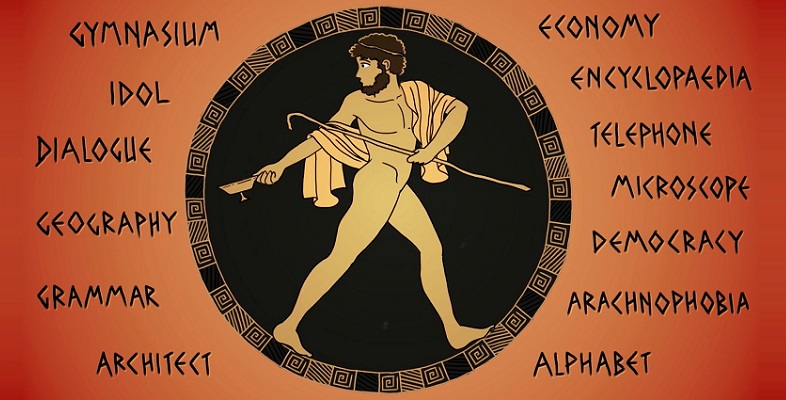5 καλός inscriptions
The verb ‘is’ or ‘are’ can be omitted in Greek if the meaning is clear.
ὁ παῖς καλός
The boy is beautiful
Here the verb is implied and must be assumed by the reader. The Subject + Verb + Complement pattern can clarify how this works:
- ὁ παῖς: noun in the nominative case, i.e. subject
- : linking verb, omitted
- καλός: masculine, singular, nominative adjective, i.e. complement
The construction is perhaps more natural in Greek because of the use of case endings. Even without the verb ἐστί, the nominative cases imply a grammatical link between ‘the boy’ and ‘beautiful’. English, by contrast, needs to make the verb explicit. The non-standard English phrase ‘he beautiful’, while just about intelligible, would draw attention to itself in a way that ὁ παῖς καλός does not.
The inscription ὁ παῖς καλός is taken from a Greek vase. A number of these so-called ‘καλός inscriptions’ praising youthful beauty survive from the sixth and fifth centuries, with more than 300 found on Athenian vases. The subject of a καλός inscription is usually named and generally male, although a few female names are found. The named individual is not usually the figure depicted on the vase, which means the inscription is not a label but probably refers to a contemporary youth. Some names, such as Miltiades, are familiar from historical events, although it is difficult to prove a connection between a historical figure and a καλός inscription.
Activity 6 καλός inscriptions
Part 1
Here are a few examples of καλός inscriptions. The adjective, as usual, agrees with its noun in gender, number and case. Identify each individual as male or female.
a.
male
b.
female
The correct answer is a.
a.
male
b.
female
The correct answer is b.
a.
male
b.
female
The correct answer is a.
a.
male
b.
female
The correct answer is a.
a.
male
b.
female
The correct answer is b.
Discussion
The gender is clear from the adjective. The men are Hipparchos, Leagros and Memnon (Leagros is named as καλός on as many as 80 surviving vases). The women are Korone and Rhodopis.
Part 2
Which form of the adjective would complete the following καλός inscriptions?
a.
καλός
b.
καλή
The correct answer is b.
a.
καλός
b.
καλή
The correct answer is a.
Discussion
The masculine singular nominative καλός is needed for a boy or man, the feminine singular nominative καλή for a girl or woman.
